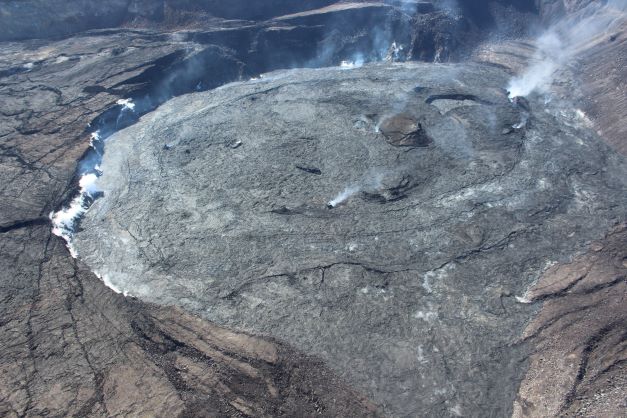Mauna Loa eruption Day 14: Volcano continues to simmer down
Mauna Loa’s eruption may still be active, but it’s now contained within the cinder cone formed around the Fissure 3 vent on the volcano’s Northeast Rift Zone.
“There is a hole in the cone that is incandescent and lighting up the fume cloud [above] at night, so it makes that fairly visible up on the hillside,” Ken Hon, scientist-in-charge at the U.S. Geological Survey’s Hawaiian Volcano Observatory, told reporters Sunday morning. “But other than that … It’s no longer producing lava that is moving outside and down the mountain.”

The Daniel K. Inouye Highway, also known as Saddle Road, remains open in both directions. The closest lava flow remains stagnant approximately 1.7 miles away, although its front may inch northward very slowly as it continues to settle. Some spots also continue to glow at night.
Tremor, which is associated with fresh magma coming up to a vent, is no longer detectable on Moana Loa.
“We believe the eruption is winding down,” Hon said, noting it’s possible the eruption could continue at “very, very low effusion rates.”
The volcano will not return to the high effusion rate that created big lava fountains and large lave flows in past weeks, Hon continued.
However, slight inflation that started on Moana Loa’s summit and Northeast Rift Zone on Dec. 7 is continuing.
Inflation, or ground-surface swelling, is caused by the accumulation of magma below ground. Its significance, at a time when the Mauna Loa flow field is inactive, is unclear.
“That’s a sign, also, that lava is not coming to the surface. It’s staying within the magma chamber and starting to repressurize the magma chamber,” Hon said.
It is common for eruptions to wax and wane or pause completely, according to USGS, but none of the eight recorded eruptions from Mauna Loa’s Northeast Rift Zone returned to high eruption rates after those rates decreased significantly.
Mauna Loa’s decrease in activity is mirrored at the Kīlauea volcano.
“[Kīlauea] started to pause three to four days ago,” Hon said. “We now believe it’s in a full pause. The lava lake is stagnant and crusted over at the summit of Kīlauea.”
Sponsored Content
Comments









